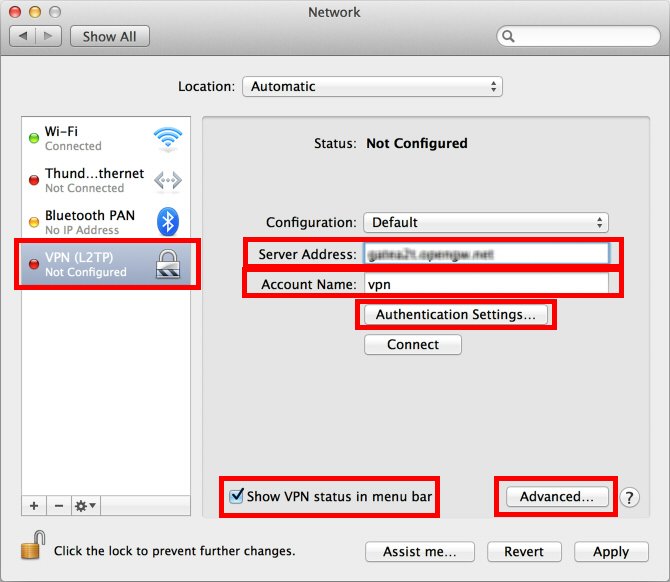Apple Vpn Client

Best VPN service for Mac – private internet access for your online security
Download ExpressVPN, the best VPN for Mac Secure Mac VPN client for Big Sur, Catalina, Mojave, and High Sierra. Take back your internet with a risk-free VPN for Mac. NordVPN is a compelling option for VPN service due to a well-rounded set of features and competitive pricing. The company is also branching out beyond VPNs to other key services including a.
The OpenVPN protocol is not one that is built into the Apple iOS operating system for iPhones, iPads, and iPods. Therefore a client program is required that can handle capturing the traffic you wish to send through the OpenVPN tunnel, and encrypting it and passing it to the OpenVPN server. And of course, the reverse, to decrypt the return traffic. spoiler show=”Click on the Mac icon to begin download.” hide=”Click on the Mac icon to begin download.” /spoiler spoiler show=”Wait until the download completes, and then open it (the exact procedure varies a bit per browser).” hide=”Wait until the download completes, and then open it (the exact procedure varies a bit per. VPN Automatically connects without user permission At least once daily, at a random time of day, the VPN will connect automatically and with no notification that it has done so. The little VPN logo just pops up on the top left all of a sudden. Considering a VPN routes all traffic through Cisco's network, this is an unacceptable privacy invasion.
Get the best VPN connection for your online privacy and protection
Keep your personal information safe from identity thieves with VPN Client.
Protect your internet connection with VPN tunnel and get access to restricted internet content globally.
Get online, freedom, Security and Anonymity with Mac VPN Client
Unblock geo-located resources Vhs to macbook.
Avoid identity thieves
Secure your internet connection while using public WiFi
View how websites appear at different locations
Why VPN Client Application?

VPN Server Locations
Our VPN servers are located in 60+ location over the world
- Fastest VPN speed and completely secure servers
- VPN unlimited bandwidth
- Select any of 90+ VPN servers
- A number of available servers are growing steadily
Australia
Brazil How to watch apple tv on xbox one.
Canada
Croatia
Spain Choctaw casino concert tickets.
Finland
Germany
India Cash wizard slot game.
Difference between american and european roulette. Israel
Japan
Sweden
Poland
Ukraine
KB ID 0001693
Problem
We mac users always get overlooked. If I had a pound for every time I’ve heard ‘Yeah we don’t support macs?” I would be a rich man. But thankfully this makes us work things out for ourselves usually!
So recently I did a article Azure: Point To Site VPN (Remote Access User VPN) but what if you want to use the same solution for a remote mac user?
Solution
Free casino games to download. Firstly you will want to download the VPN package (and have a valid client/user certificate, [see the link above]).
Obviously the installer is for Windows, but within the ZIP file you download, it has a copy of the XML file with the settings in it, and a copy of the Root CA certificate you used.
So your first job is to ‘import‘ the client certificate, it will be in PFX format, (if you followed my instructions), so you will need to supply the password you specified when creating the PFX file (not the mac password), when prompted to install it (double click on it).
The engineer in me isn’t quite sure why the client needs the Root CA certificate on it, (because that’s not how certificates work!) But Microsoft insist it’s necessary, so also double click and install the Root CA Certificate, (it’s inside the VPN Package).
You don’t need to install VPN software onto the mac, (it has its own built in). Click the Apple Logo > System Preferences > Network > Add > Interface = VPN > VPN Type = IKEv2 > Service Name = Azure-Client-VPN > Create.
Now open the XML file from within you VPN client software ZIP file, and locate the FQDN of the ‘Gateway’ address in Azure > Copy it to the clipboard.
Paste the server address into BOTH Server Address AND Remote ID > (Leave Local ID blank for now) > Authentication Settings
WARNING: I’m using mac OS Catalina, so I choose ‘None’ (NOT CERTIFICATE). But for mac OS Mojave (and older) CHOOSE CERTIFICATE). It’s a bug that causes an error (see below) if you don’t.
Select > Choose the CLIENT certificate you imported earlier, (Take note of the name in brackets, this is the common nameon the certificate). You will need this in a minute! > Continue > OK.
Put the Common Name from the certificate into the Local ID section > Apply > Connect.
All being well it should connect, (though it may prompt for you to enter your user password). BY DEFAULT the option ‘Show VPN Status in Menu Bar‘ should be ticked, if it isn’t then tick it.
With that option ticked, you can connect and disconnect the VPN quickly without needing to go back into System Preferences like so;
Error: VPN Connection, ‘An unexpected error occurred’
Apple Vpn Download
Remember above when I said choose ‘None‘ for Catalina, NOT certificate? Well this is what happens if you choose certificate!
Related Articles, References, Credits, or External Links
Vpn Client Software
NA

Apple Vpn Client
UNDER MAINTENANCE